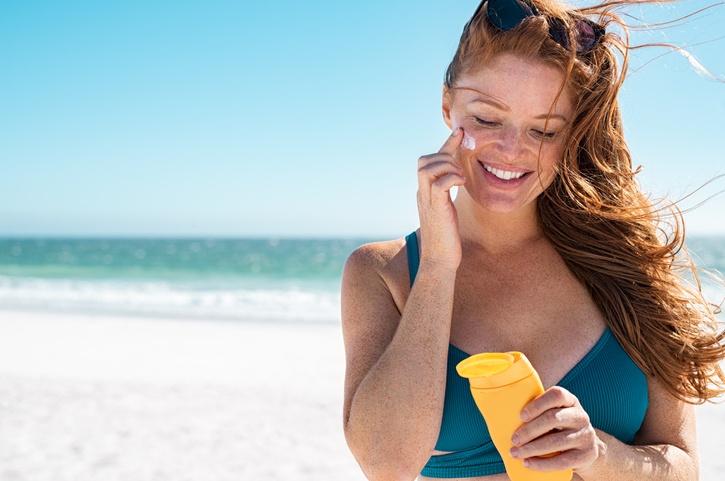In partnership with SA’s top medical aesthetic companies
The harsh sun makes things challenging, when it comes to skin, for lighter-hued South Africans. Let’s unpack this and see what we can do about it.
Once upon a time, long, long ago, our ancestors developed different skin tones adapted to the amount of sun exposure our bodies received in the geographical areas where they lived.
Those who lived in sun-drenched areas (not far from the equator, Africa, South America, Australia, India, etc.) developed more melanin pigment in their skin to act as an ‘umbrella’ to protect the structures underneath. The closer to the equator, the darker the skin tone, to offer vital protection.
Those who lived in areas with less sunlight (Northern Europe, etc.) developed less protective melanin because they didn’t need that protection, and so that what little sun was available could enter the skin and help produce vitamin D.
And then, being humans with a wanderlust, they decided to move around the world and things became really interesting. That’s how we ended up in South Africa with a multitude of skin tones ranging from the fairest of the fair to deepest brown.
We dealt with the challenges facing darker skin types in our previous story. But what are the particular challenges facing the lighter skin types?
The unfortunate reality is that for those who have skin types one to three, life under the African sun isn’t easy.
Which skin type is yours?
People are very pale, can be freckled and often have blond or red hair – think Nicole Kidman and Ed Sheeran. People with this skin type need to be extremely careful about sun exposure because they burn almost instantly, and they are likely to get severe sun damage from UV exposure, if not protected properly with sun avoidance in the hottest hours, protective clothing and, of course, ongoing SPF 50+ sunscreen application.
Skin type two is light or fair skinned, generally with pale hair and blue eyes, represented by Gwyneth Paltrow and Cameron Diaz. People with this skin type can get a light tan if they expose themselves gradually to the sun over several days, but they can burn easily if not careful and use protection.
Skin type three has light skin and most have dark hair. The difference is that their skin can become a light bronze colour when exposed to the sun. Megan Fox and Sandra Bullock are a good example here.
Typical concerns of skin types 1 to 3
Premature ageing
Up to 80 percent of what we think of as skin ageing is actually sun damage, and so it is at least partly preventable. This damage is caused by UV rays (especially UVA) which cause deep damage at a cellular level. The first line of defence is use of sunscreen and the protective measures we mentioned above from childhood, when most of the damage happens. Then using good skin care that contains antioxidants and moisturisers that protect our skin barrier is essential.
Once the damage is done, however, it’s not too late to reverse it. There’s a whole suite of treatments available to peel back the years. These are best done under the guidance of a medical skin professional to obtain good results and not cause further damage to the skin.
Premature ageing can be addressed through injectables such as Botox and Dermal Fillers as well as regular skin conditioning treatments such as chemical peels and skin needling, where the skin’s own collagen production is stimulated.
Pigmentation problems
Hyperpigmentation or melasma (excess pigmentation that causes dark spots not part of your natural skin tone) is an equal-opportunity offender, as we mentioned in our previous story, affecting skin types 1 to 6. This means that no matter what your skin type, it is essential to protect your skin from the rays of the sun every day.
It is important to understand that the treatment of pigmentation and melasma is not a one-size-fits-all solution. Before you start any treatment, you need to establish the cause of your particular pigmentation, as the treatment varies according to the different types of pigmentation.
The Skin Renewal team is standing by to assess your pigmentation concerns and offer you the best solutions to deal with the problem.
The big D
One of the trickiest health issues we all face, no matter what our skin type, is the need to protect ourselves from the harmful effects of the sun’s UV rays, while we need sun to produce vital vitamin D in our bodies. Read our next feature to find out what you can do to ensure your levels of the ‘sunshine vitamin’ are always topped up.
To find out more about the different skin types and the treatments that are suitable to yours, as well as the four pillars to maintain a youthful skin, visit Skin Renewal at www.skinrenewal.co.za
Take the quick Beyond Beauty Survey and you could win a R2 000 Skin Renewal voucher to spend in our online store, with free delivery within South Africa. T&Cs apply.
